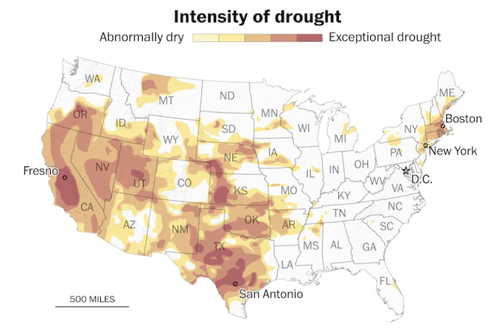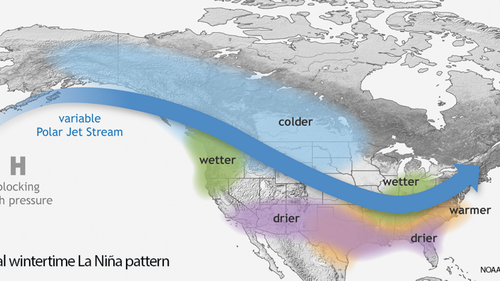SOURCE:
"Really A Desperate Time": Summer Drought Wreaks Havoc Across Northeast Farmland | ZeroHedge
Drought conditions expanded and intensified over the Northeast this summer, according to the latest report from the US Drought Monitor.
Extreme drought plagues eastern Massachusetts, including Boston, and southern and eastern Rhode Island. A severe drought is more widespread, encompassing much of South Jersey up to the coastal area of Maine. Much of the Northeast is in abnormally dry conditions as of Thursday.
The emergence of the Northeast drought comes as the US West experiences a historic megadrought threatening supplies of fresh water, food, and hydropower.
As of Tuesday, not a single county in Connecticut, Massachusetts, or Rhode Island is free of drought (and or dry conditions). This will impact the summer's growing season and may shrink crop yields.
In Rhode Island, farmers who can typically harvest hay three times in a season are expected to do so only once this year. Because each harvest varies in quality and size, that means losing about half the value of the entire crop, estimated Henry Wright, who grows about 300 acres (121 hectares) of hay and corn.
The fields are in such poor condition that as the season winds down, Wright is unlikely to be able reseed in the fall. He'll have to wait until next year, shortening the growing season. He expects the 2023 hay crop to be only 10% to 20% of normal.
"It's just not going to happen," said Wright, who's also president of the Rhode Island Farm Bureau. "This is really a desperate time."
In parts of Massachusetts in late August, the Charles River, which runs along Harvard University's campus and is the site of a world-renowned annual rowing competition, shrank to a trickle. Near the Cochrane Dam on the border of the towns of Needham and Dover, the river mainly became a series of disconnected puddles and pools.
In Rhode Island, "we had fairly normal rainfall through June, then it just dropped off the edge of a table," said Ken Ayars, chief of the agriculture and forest environment division at the state Department of Environmental Management.
The drought is also affecting the quality of the feed that's available, which will impact how much milk the cows produce. And because cows don't sweat, they don't do well in the heat, which can further affect their milk supply. Osofsky expects the herd's output to be down about a fifth this year, shaving 20% off his annual profit of $300,000 to $400,000. And that's excluding the additional expense of buying feed.
"The whole dairy game is milk," Osofsky said. "It's making as much milk as we can as cheaply as we can. So this has made it terribly expensive to do." -- Bloomberg
The drought has also impacted some drinking water reservoirs across New Jersey. In July, the Murphy administration asked New Jersey residents and businesses to conserve water due to moderate to severe drought impacting parts of the state. The water crisis appears worse further north.
Brad Rippey, a meteorologist with the US Department of Agriculture, said a high-pressure system above the Northeast had been the source of the dryness. He said the system blocked storms from coming into the region, contributing to less rainfall.
Rippey said 40% of the US is consumed in a drought. A protracted La Niña weather pattern has meant hotter and drier weather conditions in the West.
The odds of La Nina sticking around through January are now 80%, up from 72% a month ago, according to a new forecast by the US Climate Prediction Center. This could be the third time since 1950 when the weather phenomenon occurred in three consecutive years.
So is La Nina to blame for chaotic weather patterns across the US, or is it "climate change" as the mainstream media is hellbent on convincing the masses the world is headed for climate doom?


